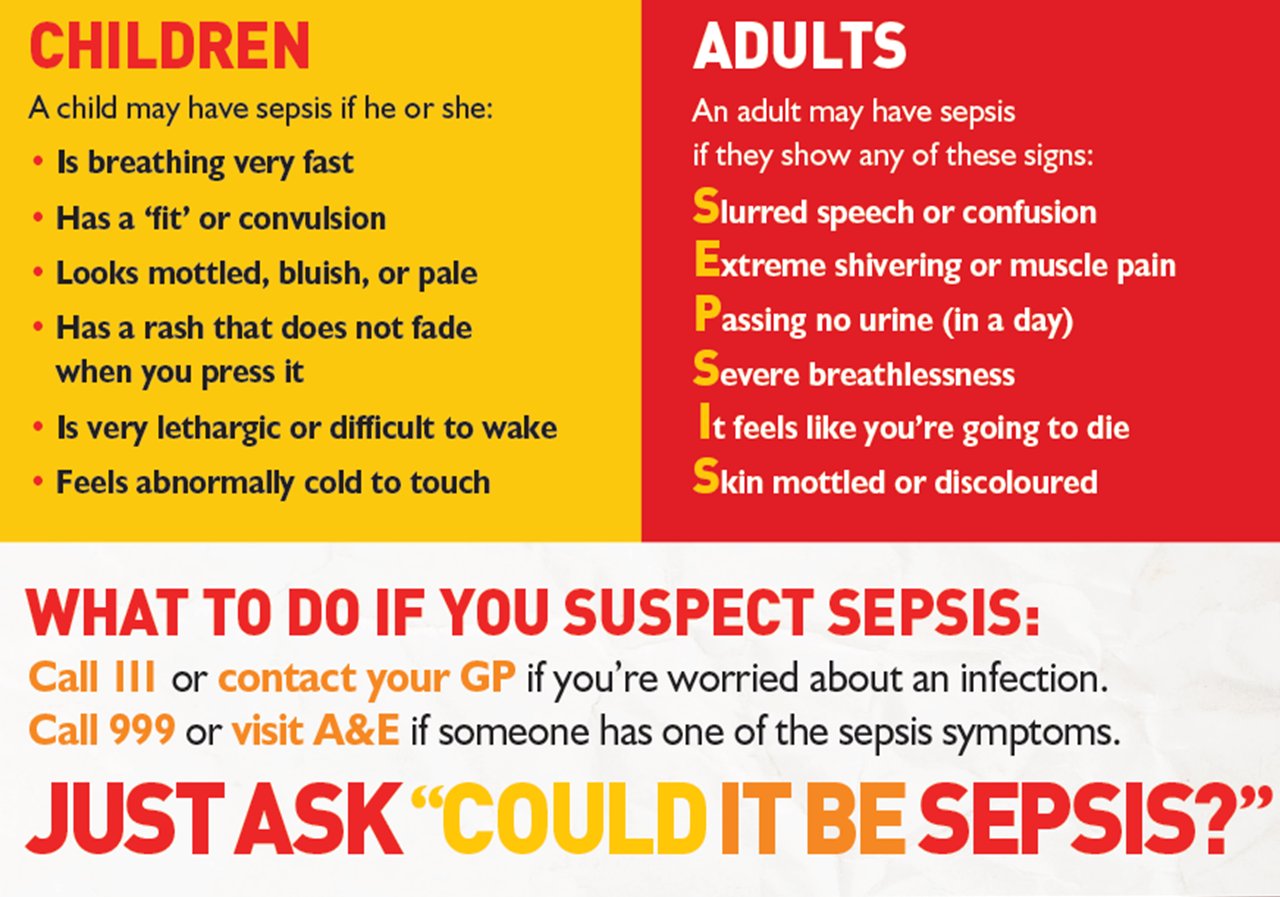What is sepsis?
Sepsis is a life-threatening condition that arises when the body’s response to an infection injures its own tissues and organs.
It occurs when the body’s immune system – which normally helps to protect us and fight infection – goes into overdrive. It can lead to shock, multiple organ failure and sometimes death, especially if not recognised early and treated promptly.
Sepsis is indiscriminate: while it primarily affects very young children and older adults, and is also more common in people with underlying health conditions, it can sometimes be triggered in those who are otherwise fit and healthy.
Sepsis always starts with an infection, and can be triggered by any infection including chest infections and UTIs. It is not known why some people develop sepsis in response to these common infections whereas others don’t.
5 people die with sepsis every hour in the UK. By helping us to reach more people with the signs of sepsis, we can work towards ending preventable deaths from this condition. After all, there is power in numbers. Click here to share the signs of sepsis on Twitter or download our Social Media graphic to share.
Symptoms
There is no single sign and no single diagnostic test – symptoms can also present differently in adults and children.
